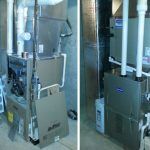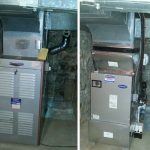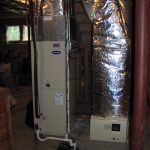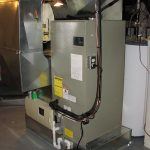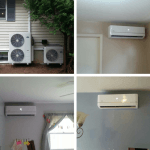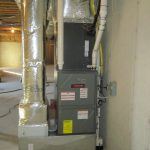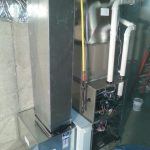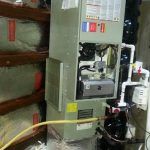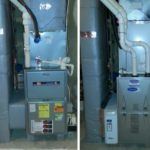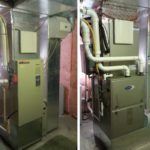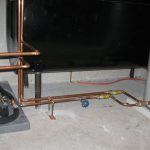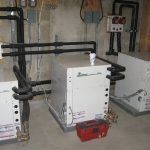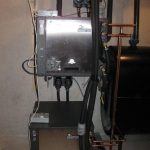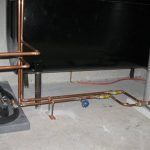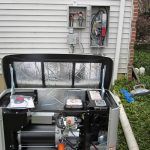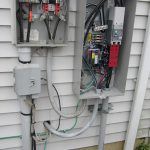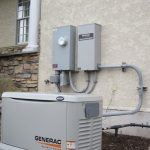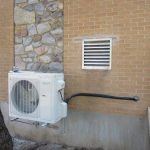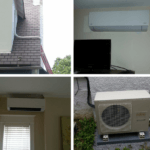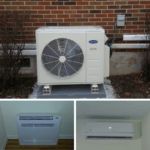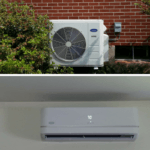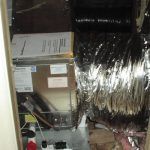Home Comfort Is Our Specialty
We are proud to be a certified dealer and installer of Carrier Products. We install a lot of reliable and efficient Carrier heating and cooling solutions, but we can provide repair, maintenance and installation for a wide range of brand products and equipment configurations. No matter how old or new your heating and cooling system, we can provide a solution to give you greater comfort all year long. The HVAC solutions we most frequently install include:
- Heat Pumps
- Gas Furnaces
- Oil Furnaces
- Geothermal Heat Pumps
- Generators
- Radiant Floors
- Ductless Mini Splits
- High Velocity Mini Splits
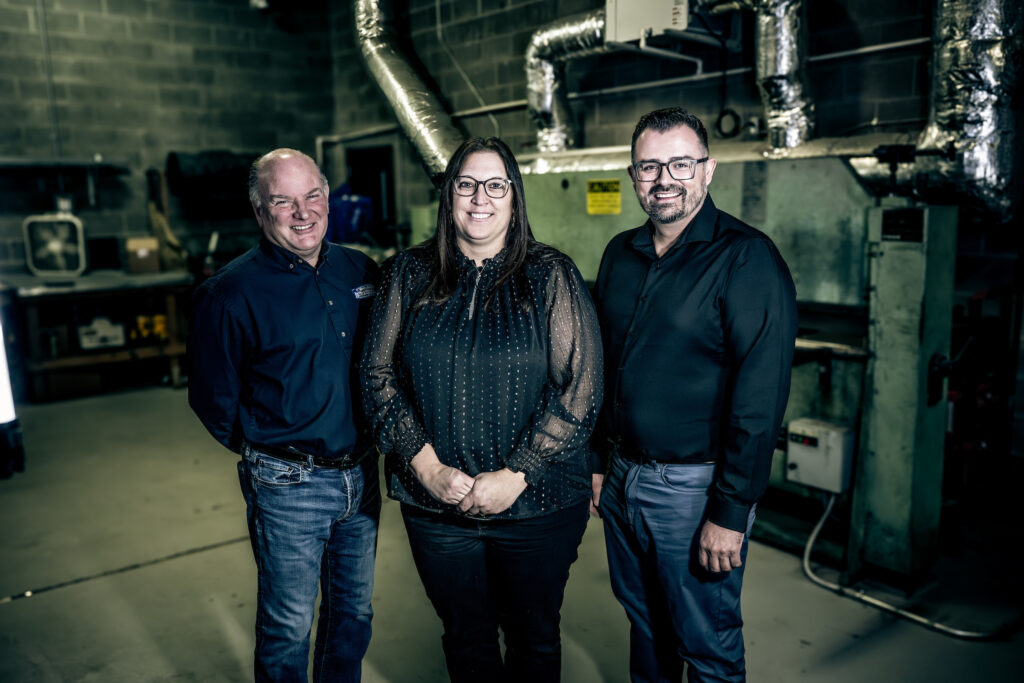
Heat Pumps
Heating Installation Experts
Burkholder’s residential customers span from all over the Lehigh Valley. We’ve found that many older homes in Emmaus, Allentown and Bethlehem are still using inefficient, fuel-based systems. With today’s prices in gas and oil, electric and hybrid-based heat pumps have gained momentum over the years as a great heating and cooling solution for many homes.
How It Works
A heat pump operates similarly to that of an air conditioning system. With all heat pumps, you will have an outdoor unit and an indoor air handler or gas furnace to dispense the heated or cooled air to and from the house.
Traditional heat pumps operate by using 2 methods:
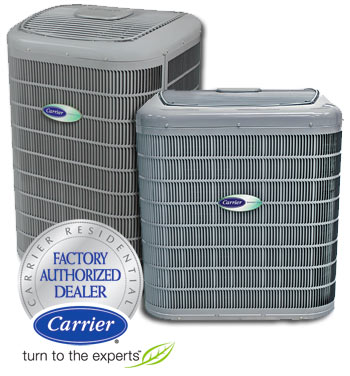 During the summer season, it collects heat from the interior of the house and discharges it to the exterior—just like any other air conditioner.
During the summer season, it collects heat from the interior of the house and discharges it to the exterior—just like any other air conditioner.
During the winter season, it reverses the flow of the refrigerant. The condenser becomes the evaporator and the evaporator becomes the condenser. It extracts heat from the outdoor air and pushes it through the condenser to be heated further by the furnace or air handler, then pushed into the house.
While a heat pump operates solely on electricity, optional hybrid systems help supplement additional heat during sub-freezing temperatures. This dual system is one of the most cost efficient solutions for homes in most climates because there is fewer equipment and natural resources involved.
Benefits of Heat Pumps Energy Saving Tips:
- More cost efficient and eco-friendly than other fuel-based systems
- Does not rely on, or requires minimal fuel
- Produces fewer air pollutants
- Delivers 1–3 times more heat energy into your home than the energy it consumes
- Can be easily retrofitted with existing duct work
- Compatible with other air delivery systems.
Keep in mind that for any heating and cooling system, your home may suffer from air leaks in areas such as doorways, windows, and poorly sealed ductwork. Be sure to weather-proof these areas to maximize the efficiency of your heat pump. Burkholder’s offers an inexpensive inspection to make sure your heat pump is working properly and not draining additional cost on your electric bill. For more energy saving tips, check out this article on energy.gov.
About Burkholder’s Heat Pump Installations
Many older homes in Allentown, Bethlehem, and Easton still use inefficient fuel-based systems. With today’s prices in gas and oil, electric and hybrid-based heat pump systems offer a more ideal solution for many homes. Our expertise in heat pump and air duct installation have satisfied our customers in Northampton and Lehigh Counties for over 40 years.
If you are interested in a quote on replacing, repairing, or installing a heat pump in your home, contact us today! We would be happy to provide you with a free estimate to recommend the best solution for your home’s unique needs.
Heat Pump Priority Service & Maintenance
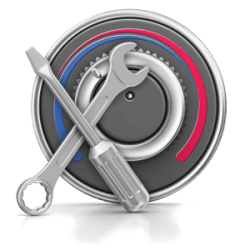 Heat pumps are critical for both heating and cooling. Our priority service plan offers bi-annual tune-ups in the spring and fall. We will clean the outdoor condenser coil, check the air flow and temperature splits and assess the compressor and refrigerant levels.
Heat pumps are critical for both heating and cooling. Our priority service plan offers bi-annual tune-ups in the spring and fall. We will clean the outdoor condenser coil, check the air flow and temperature splits and assess the compressor and refrigerant levels.
If your new or existing heat pump already includes a manufacturer’s warranty, make sure you consider long-term maintenance. Burkholder’s maintenance agreement offers routine checks and cleaning to ensure you and your family year-long comfort.
Burkholder’s Heat Pump Maintenance Agreement includes:
- Semi-annual (spring and fall) cleaning and servicing
- Safety checks and inspection of any heat pump system
Gas Furnaces
Set the Bar Higher for Your Furnace

The efficiency of gas furnaces have improved over the years with the use of cleaner, safer equipment and standards. ENERGY STAR standards have significantly changed how manufacturers engineer heating and air conditioning equipment. According to ENERGY STAR reports, if every gas furnace sold in the U.S. met the current ENERGY STAR requirements, annual savings on energy costs would increase to about $171 million.
Also, the amount of greenhouse gas emissions would be reduced to equal the amount of those produced from about 177,000 automobiles. Gas furnaces are up to 98% efficient on the AFUE (Annual Fuel Utilization Efficiency) rating scale. That means that 98% of the gas fuel is being converted to heat and only 2% is being lost in the chimney.
How It Works
The typical gas furnace is fueled by either liquid propane or natural gas. In modern gas furnaces, there are two intake valves that bring air into the system. A draft inducer fan motor sucks air into the burner assembly to supply oxygen for the fuel that is to be produced by a spark igniter.
A spark ignites the gas and oxygen keeps it burning at a high temperature. The burner assembly heats a set of pipes called a heat exchanger. The oxygen used to produce the flame is expelled through either a flue or through a pipe leading outside of the home to exhaust carbon monoxide or other fumes. A second air intake system uses a blower fan to draw air through a return vent and blow it across the heat exchanger and is pushed back through the air ducts to heat the rooms.
Benefits of Gas Furnaces
Gas furnaces are still one of the most popular used heating equipment in the U.S. today, especially in the Northeast. There are a few benefits they have over other heating systems, including:
- Natural gas is more energy efficient than oil, saving homeowners hundreds of dollars annually.
- The fuel burns more cleanly and quickly than compared to oil, which means fewer air pollutants are exhausted into the air.
- Gas furnaces require less fuel while heat output is very high.
Gas Furnace Priority Service and Maintenance
Receive an annual tune-up to prevent gas leaks and corrosion, and guarantee clean air. You’ll also receive free replacements of essential components such as thermostats, pilots, and blower belts, wheels and motors.
Oil Furnaces
Reliable and Efficient Oil Heating
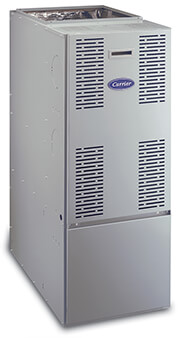 When it comes to choosing the right HVAC company to service your oil furnace, Burkholder’s HVAC has a proven record in providing excellent service for its customers throughout Allentown, Bethlehem and Easton.
When it comes to choosing the right HVAC company to service your oil furnace, Burkholder’s HVAC has a proven record in providing excellent service for its customers throughout Allentown, Bethlehem and Easton.
As a 8-time Angie’s List Super Service Award Winner and Carrier Factory Authorized Dealer, we assure that our NATE certified technicians:
- Consistently perform service to strict national standards and business practices.
- Undergo ongoing extensive factory training on all technical aspects of oil furnace installation, maintenance and repair.
- Are trained to identify and recommend the best solutions that provide excellent comfort and value specific to your needs and budget.
Learn more about why you should choose a Carrier Factory Authorized Dealer.
Oil Furnace Installation and Replacement
As a local, family-owned HVAC company, we have over 60 years of experience installing and replacing oil furnaces in all types of homes throughout Allentown and the Lehigh Valley. When you choose Burkholder’s HVAC to discuss installing a new oil furnace, our certified technicians will sit down with you to find the right heating system for your home’s heating needs and budget.
Oil Furnace Repair
Is your oil furnace on the fritz? Our certified repair technicians have over 60 years of technical experience diagnosing and repairing broken oil furnaces. Whether you live in the Lehigh Valley and beyond, Burkholder’s promises fast, reliable service when you need it.
Oil Furnace Maintenance
Annual cleaning and lubrication of parts is essential to ensure peak performance of your oil furnace. Your oil furnace maintenance visit will include this plus an examination of connections and worn parts to prevent failures, and coverage on labor and parts, including critical blower, fuel pump and burner components.
Additional Benefits included in your Burkholder’s Maintenance Agreement:
- 15% off all parts & labor
- NATE certified Technicians
- 24 Hour Emergency Service / NO overtime rates
- Up to 25% energy savings
- Increased longevity & performance of your HVAC System
- Upfront pricing / No hidden charges
About Oil Furnaces
Oil heating can be one of the most consistent ways to heat your home. Based on the principal of forced air, your furnace handles heating by a fuel source—oil. With oil, many homeowners can expect a clean burning fuel with very little smoke. Compared to other heat sources, such as wood-burning stoves, oil is significantly cleaner and outputs hotter temperatures. In the coldest winters, especially in the Lehigh Valley, oil can bring a medium to large home the right amount of comfort with consistency and efficiency.
How Oil Furnaces Work
Similar to a gas furnace, there are two valves that take in air to be heated and another valve to push air into the air ducts. With oil, a thin pipe connects to the furnace. A motor fan sprays the oil and atomizes it into a mist. This gaseous form of vaporized oil, when mixed with air, is ignited in a hot jet of fire. Once lit into the burner assembly, the flame heats the coils in the heat exchanger.
Any gaseous fumes or smoke from the flame is safely sent up into the chimney flue or through a pipe leading outside of the home to exhaust carbon monoxide or other air pollutants. A second air intake system draws air through a return vent. The air blows across the heat exchanger and is pushed back through the air ducts to heat the rooms.
Benefits of Oil Furnaces
- Unlike gas furnaces, oil burns at a much higher temperature. A single flame from the oil burner can produce an average of 140,000 BTUs while gas produces up to 100,000 BTUs from multiple small jets of ignited gas.
- Varying oil providers give you flexible options for your optimal budget costs and service. Gas services provides by your municipality is a fixed provider and price.
- Your oil is safely stored on your property and is under your control. In severe winters, public gas lines can experience a drop in pressure, which could lead to inefficient heating.
- Access to oil is an easy installation and delivery, rather than costly upfront costs to install public gas lines into your home.
Geothermal Heat Pumps
Powerful Energy Savings Just Below Your Feet
While some energy resources are limited, our planet’s ability to absorb the Sun’s heat energy provides an unlimited source of heating and cooling for your home. Because the Earth’s consistent underground temperature is ideal for most home’s heating and cooling needs, we can circulate the sun’s unlimited heat energy to keep our homes comfortable all year long, and NOT break the bank!
Geothermal energy is becoming more popular in homes and saving homeowners hundreds of dollars a year. Why? Geothermal systems provide a more energy efficient method to heating and cooling your house by using the Earth’s natural underground temperature. Recent studies conducted by the EPA and the U.S. National Renewable Energy Laboratory confirmed that geothermal energy is the most environmentally friendly alternative to standard HVAC systems.
How It Works
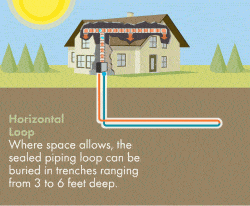 A geothermal heat pump is an electrically powered device that uses the Earth’s natural underground or groundwater temperatures to heat and cool your home or office. It operates similarly to a normal heat pump, but uses a different method in how it extracts heated and cooled air from outdoors. Long, fluid-filled pipes, called heat exchangers, are buried deep underground, running either horizontally or vertically—depending on the size of the property. Below the Earth’s 10-foot frost level, the ground maintains a moderately consistent temperature of about 54-degrees.
A geothermal heat pump is an electrically powered device that uses the Earth’s natural underground or groundwater temperatures to heat and cool your home or office. It operates similarly to a normal heat pump, but uses a different method in how it extracts heated and cooled air from outdoors. Long, fluid-filled pipes, called heat exchangers, are buried deep underground, running either horizontally or vertically—depending on the size of the property. Below the Earth’s 10-foot frost level, the ground maintains a moderately consistent temperature of about 54-degrees.
Winter Heating
In the winter, the fluid in underground pipes absorb heat. Because the fluid has a low boiling point, the evaporator inside the heat pump does not have to work as hard to turn the fluid into a gas, which is what produces the heat energy to warm your house. The second law of thermodynamics says that if a two surfaces of a different temperature meet, the hotter surface is cooled and the cooler surface is warmed. In this case, the hot surface is separated by the evaporator coil in your air handler or furnace. Heat is given off as a result of the cooler indoor air blowing against the heated coils. The hot gas cools, returns to a liquid, and is fed through the underground pipes to repeat the cycle.
Summer Cooling
Alternatively, the system works exactly in reverse during the summer. Just like an air conditioner, heat from inside you home passes through the furnace or air handler and is delivered to the heat pump unit. From there, the heat is sent to the underground pipes. Because the earth is significantly cooler in comparison to the hot summer air, the heat from the pipes dissipates, and the liquid refrigerant returns to a gas form when heat from inside meets the evaporator coils.
Why Go Geothermal?
Geothermal energy is becoming a hot topic in home energy solutions for a number of reasons:
- Underground temperatures are more consistent throughout the year. Because geothermal heat pumps do not have to work as hard to keep your home feeling comfortable, you will save significant amounts of money.
- Geothermal heat pumps should not require additional fuel-based HVAC systems, which can produce harmful air pollutants.
- Because of your environmentally conscious choice, you may qualify for a nice tax refund or finance rewards from the federal, state, and local government. Check with your local utility company or municipality to see what current programs are available.
While the cost benefits of geothermal energy systems are enough to make you jump on board, there are a few disadvantages to consider, including:
- High up-front installation costs and a complex installation process
- Logistical challenges regarding your property, specifically limited yard space, inaccessible yards, or non-existing yard
- Legal policies from your local municipality or utility company that prohibit the right to dig underground
- Interfering utility components such as plumbing, buried internet/cable wiring, and underground electricity lines.
Learn More About Geothermal Energy
If you are interested in learning more about geothermal before you decide if it’s right for you, download this in-depth homeowner’s guide to geothermal from Climatemaster. It will answer most of your questions.
Generators
Never Be Left in the Dark Again
When the Power Goes Out, We’ll Turn You On! If there’s one thing Hurricane Sandy taught us, it’s that power is a fragile thing. With meteorologists predicting storms of this magnitude and resulting power outages to become a more common occurrence in the Lehigh Valley, now is the time to consider a backup plan.
Keep Your Family Safe
Generators are a great way to protect your power supply, but portable generators do come with risks. There have been tragic reports of carbon monoxide poisonings from people running portable generators in garages or too close to homes. “The danger is that people don’t realize they’re breathing in the gas until it’s too late,” says Dave Wieder, VP of Burkholder’s. “It’s also very dangerous to start up a gas-powered generator in a storm with rain or snow because of the potential for sparks, which can lead to fire or electrocution.”
To keep you and your family safe and warm this winter, Burkholder’s is offering whole house generators that are reliable, convenient and risk-free. Burkholder’s whole house generators are easily installed into your existing power panel to automatically switch on in a power outage, and then off once power is restored. They are hassle-free and automatic to keep your energy flowing seamlessly and your home running smoothly and safely.
Cost Savings When It Matters Most
Another benefit is unexpected savings. “People think they’re saving money, but portable gas-powered generators typically cost two to three times higher than our system’s daily operating cost,” says Wieder. Powered by natural gas, propane or diesel, Burkholder’s whole home generators use energy-efficient resources. “Aside from the convenience and cost, it’s really a matter of safety,” he says.
Radiant Floors
No More Cold Feet
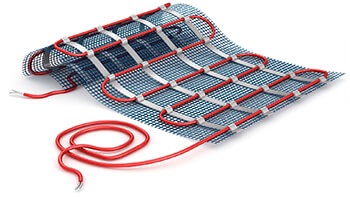 Radiant floor heating is ductless, noise resistant, and distributes heat evenly through every room. Heating your home with a forced-air furnace isn’t your only option when you have concrete floors. You can save energy and create a healthier, more comfortable living environment by having the floor itself distribute the heat from the ground up by a radiant in-floor heating system.
Radiant floor heating is ductless, noise resistant, and distributes heat evenly through every room. Heating your home with a forced-air furnace isn’t your only option when you have concrete floors. You can save energy and create a healthier, more comfortable living environment by having the floor itself distribute the heat from the ground up by a radiant in-floor heating system.
How It Works
The most popular and most cost efficient radiant heating systems use water. Water-filled tubes are heated by an energy source such as a standard gas/oil-fired boiler, or water heater. The science behind radiant floor heating is quite simple: Tubes that circulate hot water are installed in the concrete slab when it’s poured, turning the thermal mass of the concrete into an inconspicuous radiator of warm, even heat. It is even possible to regulate the temperature from room to room by using zoning valves or pumps inside the tubes.
Benefits of Hydronic Radiant Floor Heating and Cooling
- Among the many benefits, radiant floor heating is a ductless system, meaning:
- No noisy blowing of air
- No dust or circulated allergens through air vents
- No energy loss due to duct leaks
- No necessary cleaning maintenance like air ducts
- Floor heating requires less energy to maintain the level of heat comfort in your home
Other Considerations
While all heating systems have their drawbacks, radiant floor heating is no exception. When researching possible heating solutions, think of some of these considerations:
- Depending on the floor material in your home, some insulating materials (e.g.: thick carpet or area rugs) decreases the response time of your system. Constant heat may also dry or crack wooden floors if not properly treated for this heating application.
- Larger rooms have greater thermal mass, which means it may take considerably more time to heat or cool the floors. This makes it more difficult to program timed temperature changes.
Ductless Mini Splits
Great Solution for Retrofits, Additions and More
Just because you have a room without ductwork doesn’t mean you can’t be cozy! Many older homes in the Lehigh Valley, particularly smaller brick homes and row homes, still use traditional style window air conditioning units. In homes like these, there may not be many options due to logistical challenges in the infrastructure of the walls and ceilings.
In cases like these, we have recommended ductless, mini-split heat pumps for our Lehigh Valley customers. Ductless HVAC systems are a great solution for homes with little to no room for bulky air ducts. They fit to handle your heating and cooling needs and combine with other systems such as hot water heaters, radiant floor panels, and fuel space heaters. It is also beneficial if you have renovated or extended your home, but do not have the means to extend or install new ducts.
How It Works
In a mini-split system, a small heat pump compressor unit sits outside of your home. Connected to the outdoor unit are thin pipes filled with a refrigerant liquid. Similarly to a heat pump, the pipes transfer the refrigerant in either a liquid or gas form. The refrigerant pipes break off to the separate rooms to be heated or cooled. The thin pipes are fed through the walls or ceilings to connect to a small head unit mounted in the ceiling or walls. A head unit containing a fan, blows across the refrigerant pipes, delivering hot or cooled air into the rooms.
Why We Recommend Ductless Mini-Splits
- They are easy to install.
- They are super efficient because there is no energy loss due to leaky or bulky air ducts.
- Unlike window units, they are super quiet.
- Temperature control in specific rooms can benefit those in residential and commercial environments.
Other Considerations to Mini-Split Heat Pumps
There are very few unfavorable aspects to the mini-split system. However, the disadvantages are:
- Limited styling options. Depending on the chosen head unit, wall mounts or ceiling mounts may not be visually attractive.
- Because it is a ductless system, there is no air return vent to recondition and circulate fresh air back into the rooms.
Increase Your Home Equity
Before you sell your home, consider the current state of your HVAC system—it can easily add a few thousand dollars in your home equity, or make or break a deal in a home sale. If you have recently added an extension to your home or have renovated areas that need heating and cooling, consider installing Ductless Mini Splits to increase the value of your home.
High Velocity Mini Splits
Perfect Solution To Replace Bulky Ductwork
Get better air circulation with high velocity. Smaller pipes means better air mixture—making for a more comfortable home. High velocity, mini-duct systems are a way of handling and delivering cool and/or warm air throughout your home. They are a great solution if you live in homes with old, brick walls, wood beams, open floor plans, or new construction. The sleek and flexible design of mini-ducts are made to maneuver around many obstructions where typical air ducts won’t fit. They can fit with an existing hot water heating, electric, or heat pump system.
How are High-Velocity, Mini-Ducts Installed?
 Paired with your existing heating or cooling unit, an air handler pushes hot or cold air through a single supply trunk. High velocity mini-ducts—flexible, sound-insulated tubes measuring about 2–3 inches in diameter—are connected to the main supply trunk to deliver air into the rooms of your home. The small tubes can be “snaked” through walls, floors, and even ceilings.
Paired with your existing heating or cooling unit, an air handler pushes hot or cold air through a single supply trunk. High velocity mini-ducts—flexible, sound-insulated tubes measuring about 2–3 inches in diameter—are connected to the main supply trunk to deliver air into the rooms of your home. The small tubes can be “snaked” through walls, floors, and even ceilings.
The mini-duct outlets are positioned away from room traffic—typically in the corner of a room. The outlets are covered with a damper, which provides a quiet and discreet opening for the powerful, slim stream of air. These discreet covers come in a variety of finishes to give the outlet its own unique and sleek style that blends into any room.
Benefits of High-Velocity, Mini Duct Systems
- Narrower tubes push air more aggressively
- Air circulates throughout the room more evenly
- Reduced humidity or drafts
- Noise reduction vent covers are discreet and easily blend into the room environment
- Easy to install
- Insulated tubes fit in almost all homes and don’t take up much space compared to air ducts
Cost of High-Velocity, Mini-Duct System
Cost of installation is dependent upon a number of factors, such as the size of your home, the number of outlets needed to heat and cool each space, existing systems, etc. Feel free to request a free quote and find out if installing high-velocity heating and cooling systems is right for your home.

